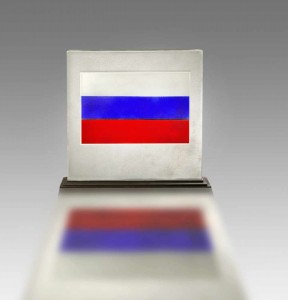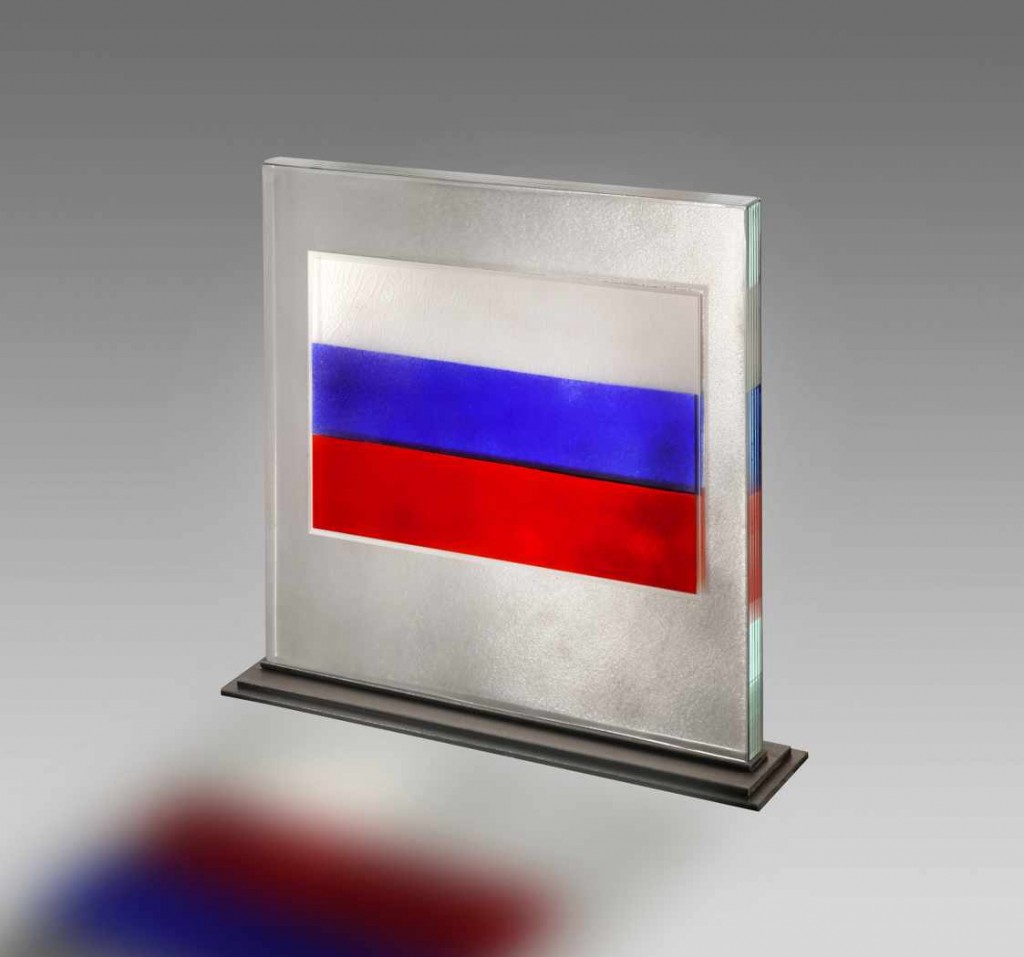 Return the 2011 summary
Return the 2011 summary
 Work available
Work available
Russia
2011
50 x 50 x 3,6 cm | 28 kg
Fused multilayer glass with inclusion of pigments ![]()
It was in 1699 that Tsar Peter I, known as Peter the Great, brought back from one of his trips to Europe the colors
of the national flag chosen on May 7, 1883.
The Dutch banner having seduced him, he simply changed the arrangement of the bands and gave meaning to the colors: white represented the tsar, blue the nobility, red the people. This colorful harmony was at the origin of the so-called “Pan-Slavic” colors used in many flags of Eastern Europe.
Before Peter the Great, Russia's emblem was Saint George slaying the dragon on a red background, or the medieval Russian flags, mainly religious and military. From the 18th to the 20th century, the flag changed several times.
When the Bolsheviks came to power and during the period of the union of Soviet socialist republics, from 1921 to 1991, it was replaced by a red flag with the hammer and sickle and inspired many communist countries, such as China, Korea, Yugoslavia and the GDR.
En 1990 les couleurs panslaves réapparaissent, le drapeau russe sera à nouveau hissé sur le Parlement le 22 août 1991 et officiellement adopté par décret le 25 août.
Click on the images to zoom
Official name: Fédération de Russie
Continent: Asie et Europe | Capital: Moscou
Area: 17 075 200 km2 | Population (2011) : 142 914 136 habitants
Official language: russe | Currency: rouble
Border countries: Azerbaïdjan, Biélorussie, République populaire de Chine, Corée du Nord, Estonie, Finlande, Géorgie, Kazakhstan, Lettonie, Lituanie, Mongolie, Norvège, Pologne, Ukraine
National holiday: 12 juin | Member of the United Nations: 24 October 1945
Member of UNESCO: 21 avril 1954


